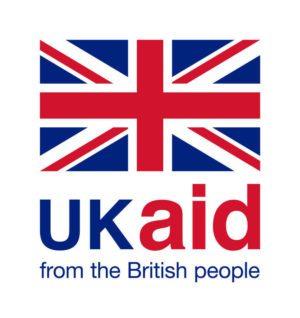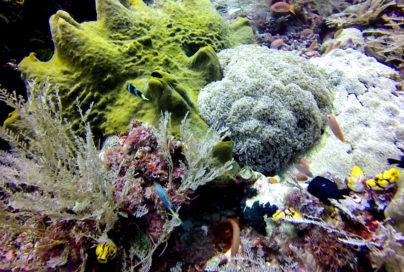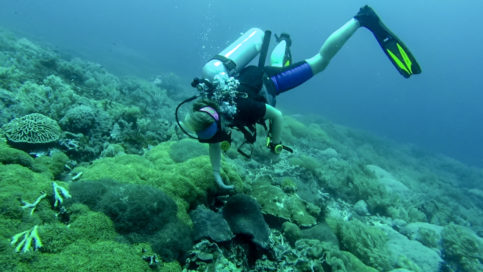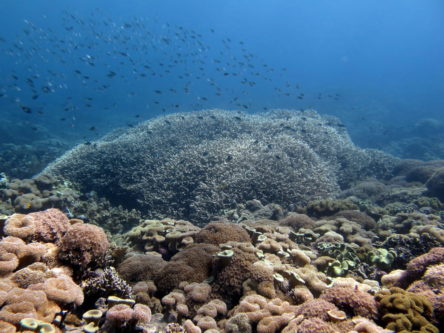“Three, two, one, GO!”
All nine of us roll off the boat in perfect unison. As I hit the water, my fins fall to one side. I feel them collide with my neighbour, and all I can think is: “I hope that wasn’t his head”. The first thing I do is signal to James, the boat marshal, that I’m okay, before then checking on my neighbour. My fins hit his tank, so thankfully he’s not hurt.
Looking landwards through my water-speckled mask, I can easily make out the distant peaks of Atauro Island, Timor-Leste, though our basecamp on the seafront is out of sight. I turn back as we start to drift away from the boat, looking for my dive buddy, Simone, as the surface marker buoys are being passed down to the dive leaders.
Once everyone has joined up into buddy pairs, Blue Ventures’ Field Scientist, Jenny, gives the ‘okay’ sign and I reply with the same gesture. We orientate, put in our regulators and deflate our BCDs (buoyancy control devices) to begin our descent. I feel the pressure in my ears increase as I sink beneath the waves, coupled with a sense of freedom that grows by the second. This is why I fell in love with scuba diving.
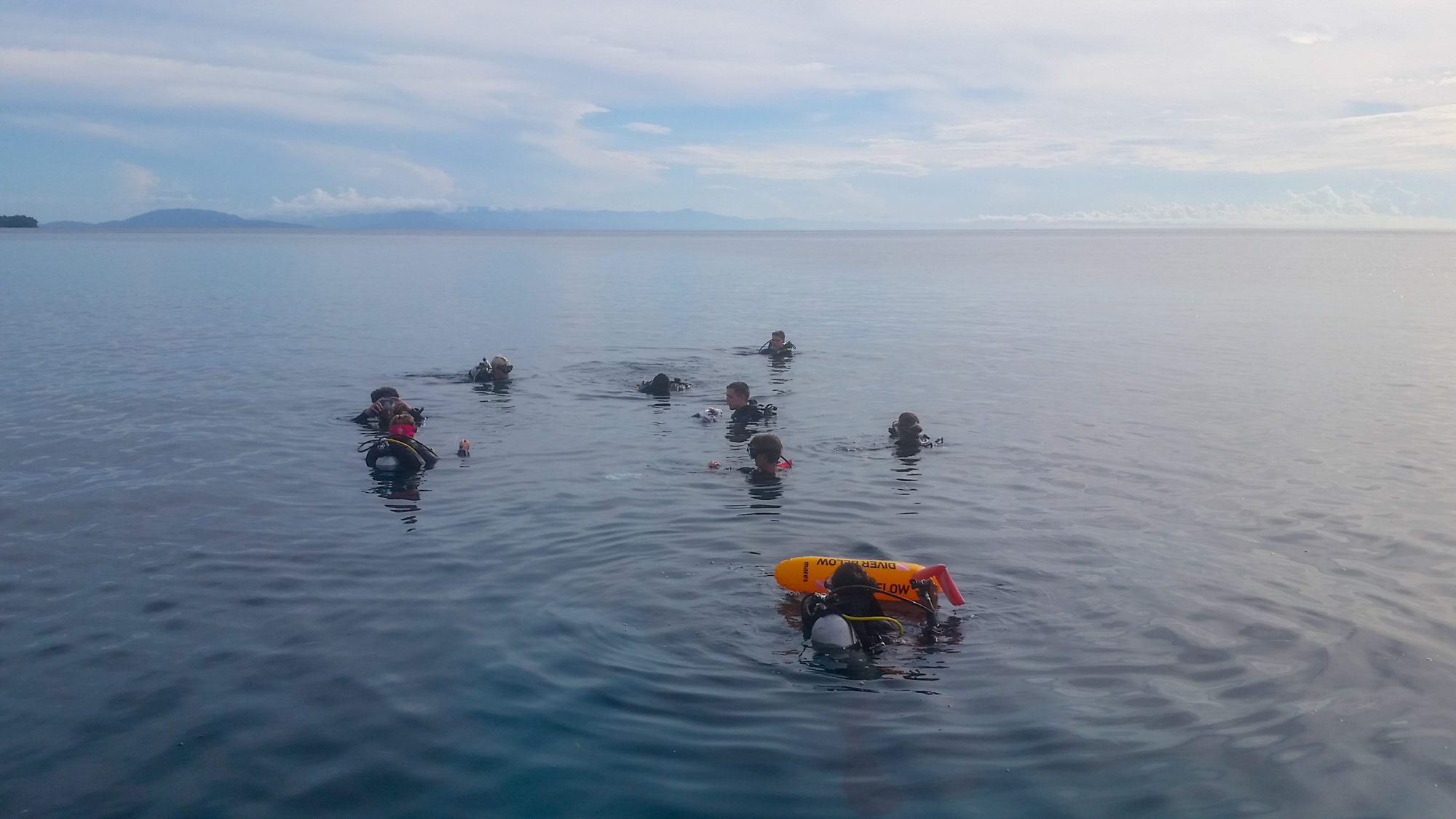
The group orientate themselves before descending onto the reef.
As we descend further, we notice a change in the current and it’s driving us off course. We had planned to go to a nearby wreck, but the current is against us: there’s no point in fighting it, we won’t see the wreck today. Jenny alters our course and we start to go with the flow. Once we reach our desired depth, my buddy and I take out our dive slates. Today’s goal is to practice identifying all the corals we learned in Jenny’s lecture – I really hope we do well on this practice test so that we can begin collecting data for Blue Ventures’ ongoing coral reef monitoring programme.
Jenny points at the first coral we meet, which I recognise immediately. It resembles a stack of little balloons, so it must be bubble coral. I write it down and show Jenny, who does a little dance and signals ‘okay’, which means I got it right. Yes! One down, 29 to go. The second coral is smaller. I ‘waft’ it with my hand and note that it has a hard skeleton, but the top part moves a little. It looks like a cluster of green stars. Galaxea? Yes! I’d got it right again, and the proud look on Jenny’s face is priceless.
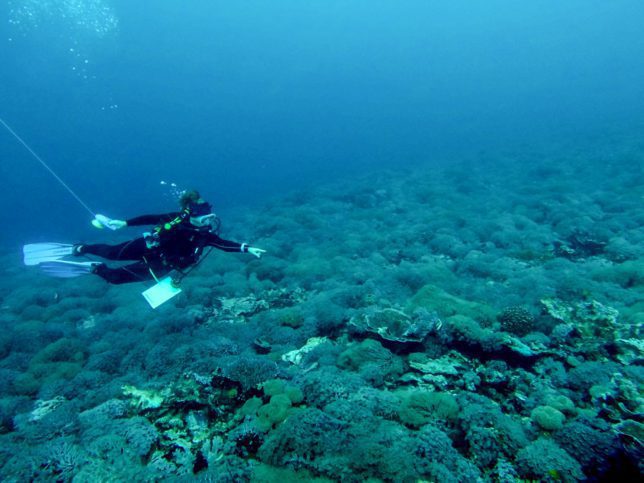
Jenny points out different coral species
Along the way, we spot more than just corals. There’s a huge variety of fish from different families, including an impressive lionfish. It’s so big everybody spreads their arms to show each other how big they think it is. In my head I’m shouting: “oh my God, it’s huge!” as I share amazed looks with Simone. The current carries us away from the lionfish, and Jenny tests us on a few more corals. We have covered the easier ones, and now it’s getting tough. I really want to prove that we know what we’re talking about.
We have just correctly identified number 23 when Jenny suddenly points at something else. I’m just too far away to see it properly, but I can tell it’s not a fish, and definitely not a coral. Jenny picks it up and brings it closer. It’s a television remote. How on Earth did it get here, on the bottom of the ocean? I’m flabbergasted and confused. I write “how?” on my slate and show both Jenny and Simone. They look just as astonished as I feel. Before Jenny puts it in her pocket, Simone and I take five seconds to take a mandatory selfie, and we drift onwards.
Jenny indicates another coral, the thirtieth and final species in today’s test. This last one is hard and I need to get it right if I want to pass. It looks soft, with jelly-like tentacles that sway with the current. Suddenly a fish emerges from the mass of tentacles, closely resembling Nemo and Marlin. It must be an anemone. I jot it down and show Jenny, a little doubtful about my answer. She gives me a look and I begin to doubt myself even more. Then she smiles and gives me a double ‘okay’ sign. I had passed!
Proud of our accomplishments, we enjoy a small underwater celebration, until I notice with surprise that we’ve been diving for 45 minutes. It always goes by so fast. As Jenny gives us the sign that it’s time to ascend, all I can think is “why can’t it last a little longer?” We halt our ascent five metres below the surface. This is the final stop of our dive: three minutes at five metres to make sure our ascent is safe. It seems harder than usual; the current is trying to drag me away from Simone. I grab onto her to make sure we all stay together. We keep an eye on our dive computers, passing the time by blowing rings with our bubbles. When our computers are done counting down, Jenny gives us the ‘thumbs-up’, indicating we can continue our final ascent to the surface.
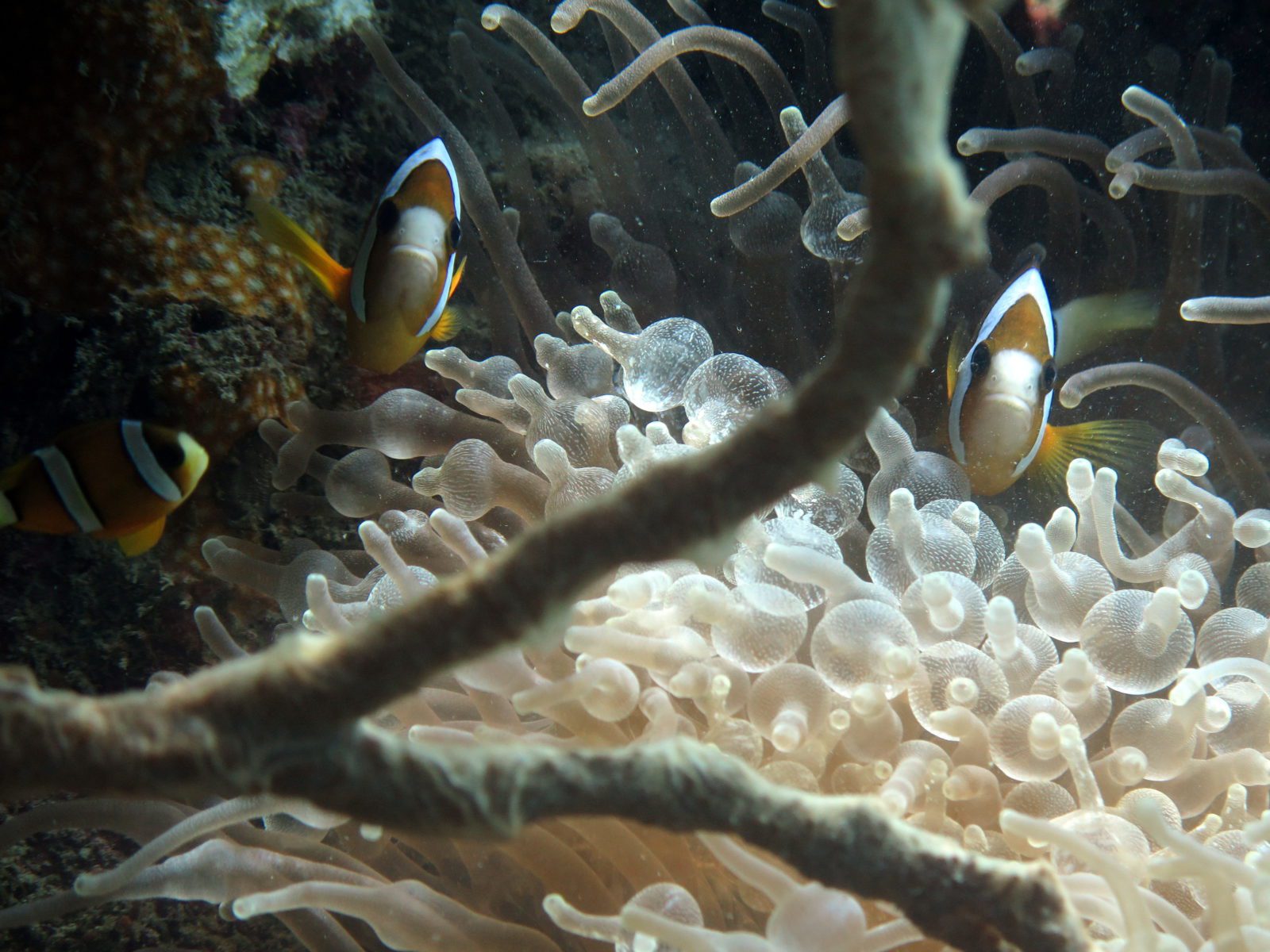
Anemone fish in their host anemone | Photo: Jen Craighill
As we make the transition from air to water, I take out my regulator, remove my mask and signal to James that we’re all okay. When the boat draws close, I take off my weights and gear, passing them up to James before finally taking off my fins and climbing on board.
“What a dive”, I say, still buzzing with excitement inside as I take my seat at the end of the boat. “This is why I came here”.
Inspired by Fiona’s descriptions of the underwater world in Timor-Leste?
Join us on a marine conservation expedition!
All photos in this blog were taken by Fiona unless otherwise specified in the caption.
Blue Ventures would like to thank our supporters and funders including the Darwin Initiative through UK Government funding, the GEF through UNEP under the Dugong and Seagrass Project, and Wilstar.
